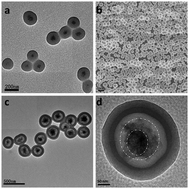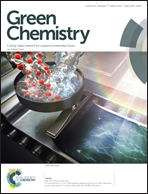Yolk–shell Fe3O4@SiO2@PMO: amphiphilic magnetic nanocomposites as an adsorbent and a catalyst with high efficiency and recyclability†
Abstract
This study describes the preparation of a multifunctional adsorptive catalyst by the incorporation of ligand groups within the channels of magnetic amphiphilic nanocomposites and attached with Pd nanoparticles. It was clearly demonstrated that Pd2+ was adsorbed by ligand-functionalized materials in water, and then Pd2+ was coordinated with ligand groups. Finally, the Pd nanoparticles were produced via an in situ reduction of Pd2+ by ligand groups through a simple hydrothermal process. Moreover, amphiphilic nanomaterials are viewed as excellent collectors of hydrophobic contaminants in water. The immobilized catalytic active sites with ligand-functionalized nanocomposites were allowed for maximal exposure to the reactants with minimal leaching of the Pd nanoparticles. The unique amphiphilic nanocomposites enabled selective oxidation of alcohols to proceed efficiently in water under aerobic conditions. Moreover, this nanocomposite catalyst could be completely recovered using an external magnet due to the superparamagnetic behavior of Fe3O4 and can be recycled with sustained selectivity and activity.



 Please wait while we load your content...
Please wait while we load your content...